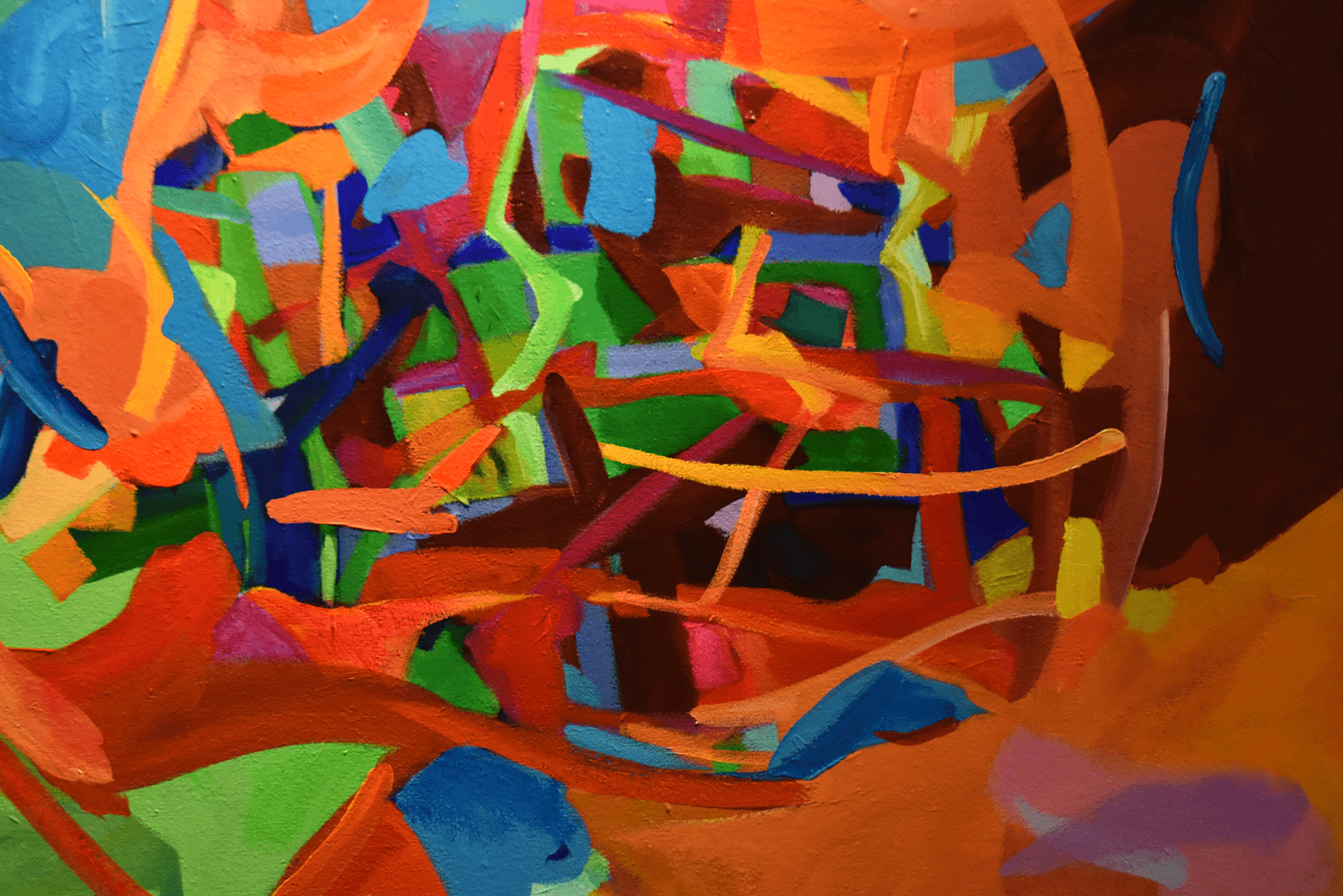Featuring Local Artists Year-Round in Old Town Library’s “Treehouse”
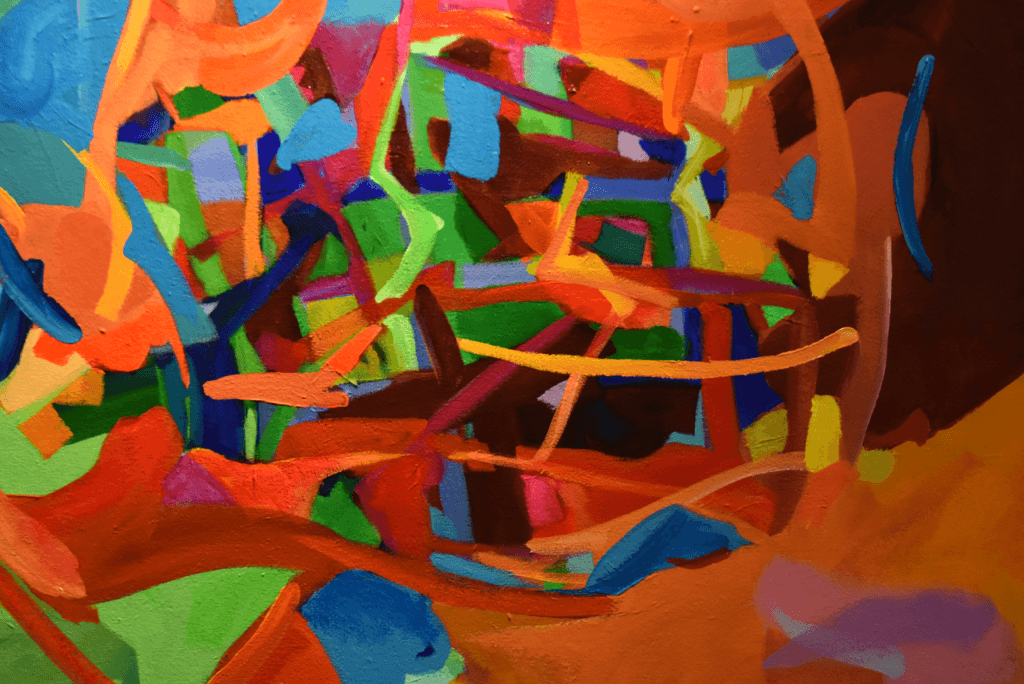
Stepping into the second floor of Old Town Library, you can surf the internet on one of our public computers, enjoy private study rooms, or walk into our beloved “Treehouse.” Overlooking an arboretum (tree garden) maintained by the City of Fort Collins, the Treehouse was recently renovated to become a space for remote workers, quiet study sessions, or to enjoy local art in our new exhibit.
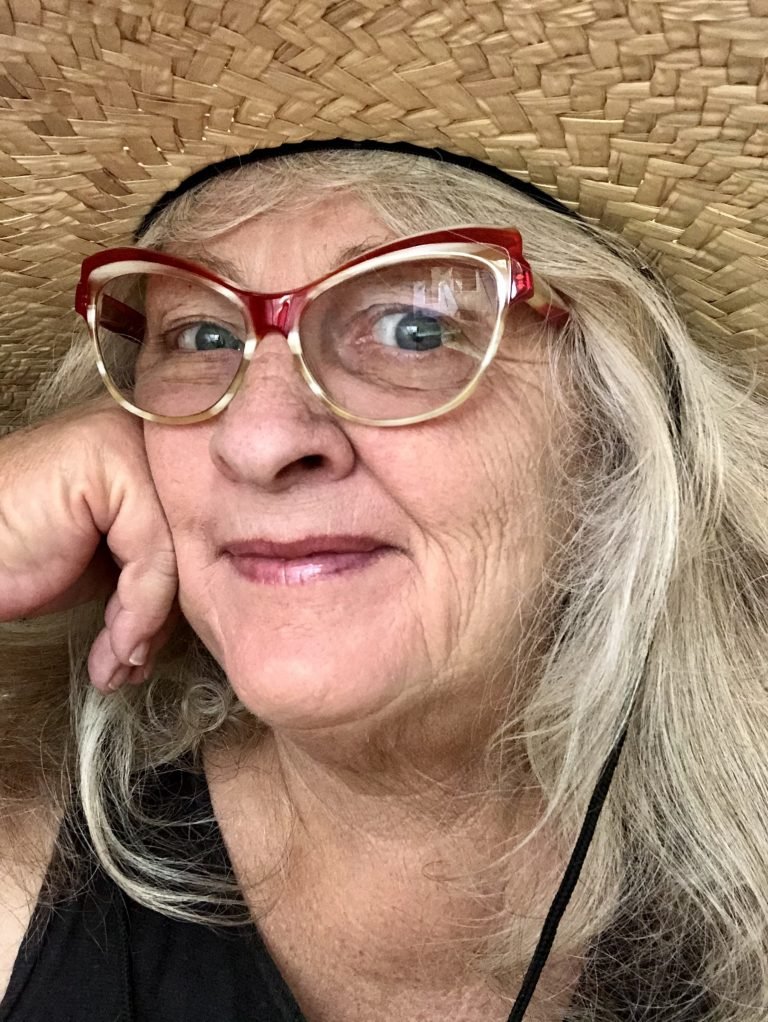
The exhibit features local artists, displaying the incredible creativity of the Fort Collins community.
Our most recent artist is Diane Findley. Below, you can learn about Diane’s artistic process and her beautiful paintings.
1) When and why did you first start creating art?
Because I have been a potter all my life I understand tradition. But fine art is a different bird all together. In my abstract painting I have no recipe card to follow, so I remind myself to paint it like I feel it. Showing my paintings is an invitation into my whole world. It can be a little slippery out there but honestly there is no plank I’d rather walk.
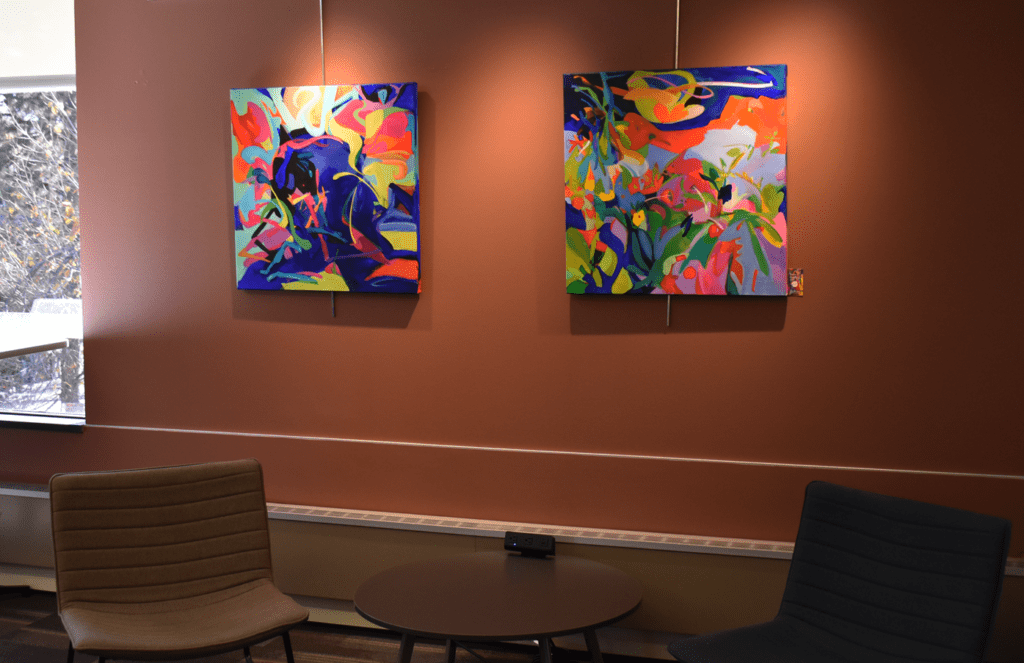
2) What inspires your art?
I am continually inspired by the many members of Trimble Court Artisans cooperative, where I serve as president of the board. I love opening our doors to new members and welcoming their clever young blood. Trimble Court Artisans, established 1971, is the oldest artist cooperative in Colorado and in the top three oldest in the nation. My art work can be seen there year round.
3) What’s your dream project?
A: My dream project is well underway as I engage my grandchildren in the practice of making art. I showed them the way to fill the world with color and joy. We have loads of fun and I look forward to many happy adventures ahead. I must be the luckiest person in the world pursuing this dream project.
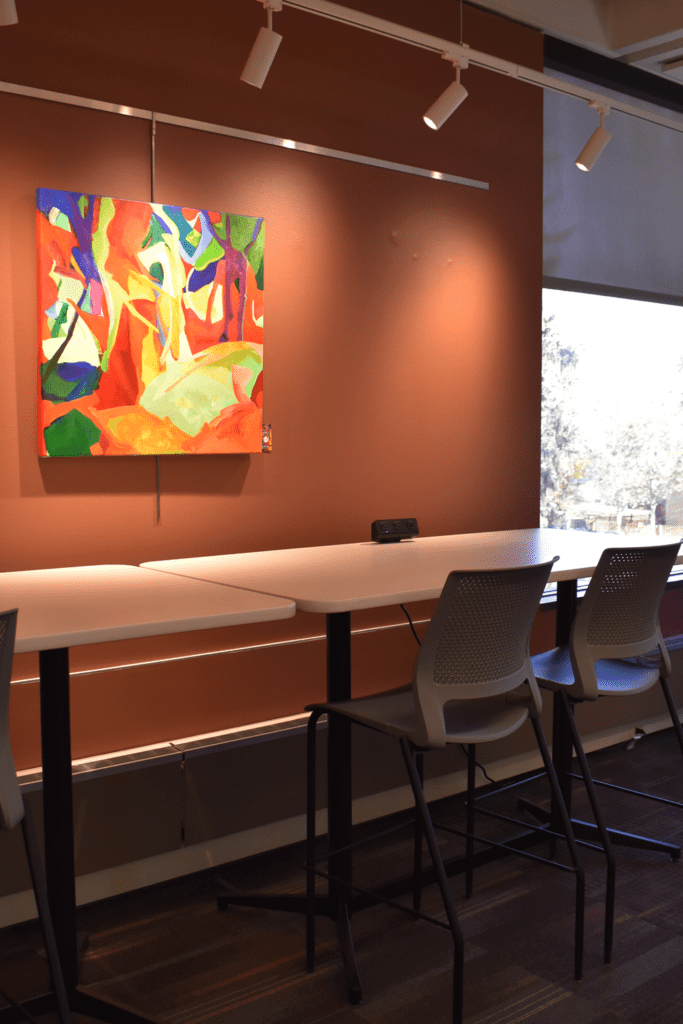
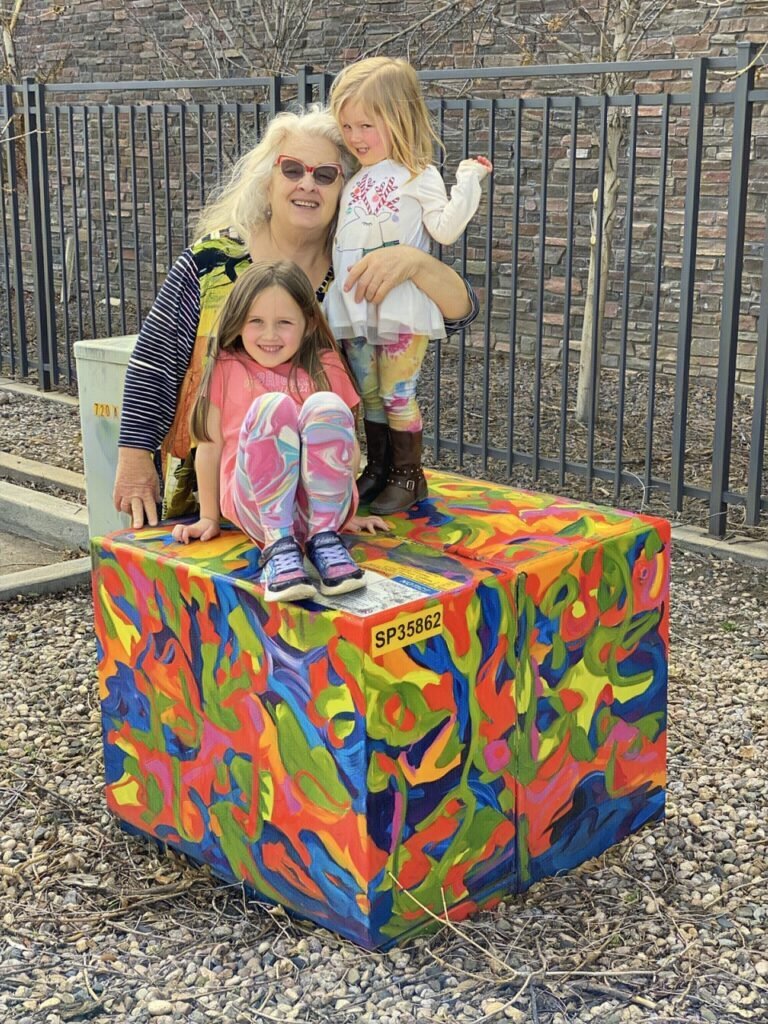
4) What’s your favorite book of all time?
A: My favorite book of all time is Frida, a children’s book written by Jonah Winter and illustrated by Ana Juan. I received this little book as a thank you for volunteering at a book fair long ago. I will never grow weary of watching the colorful pages turn and listening to my son read it to me in Spanish. It is often the small things that mean the most.

